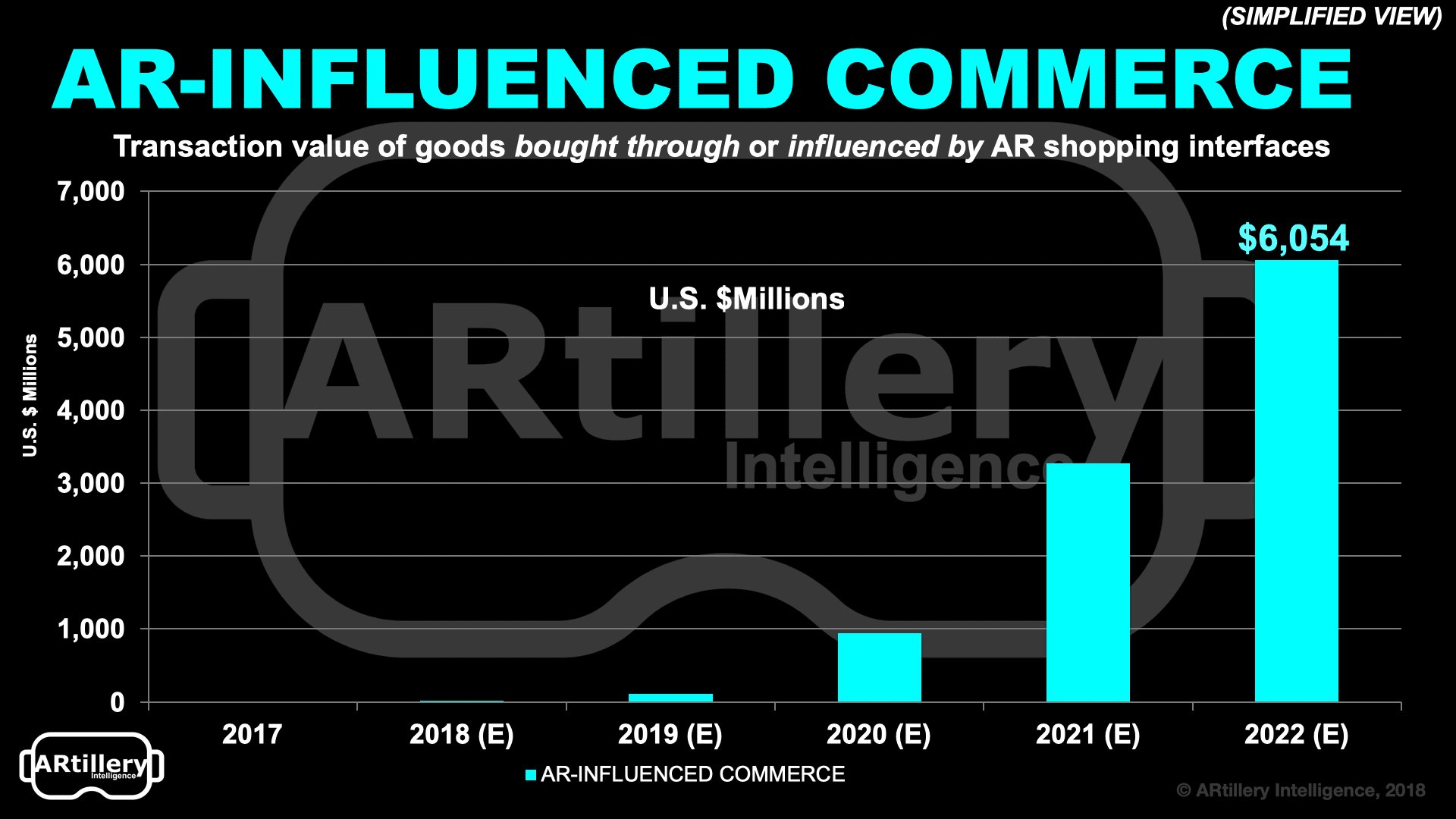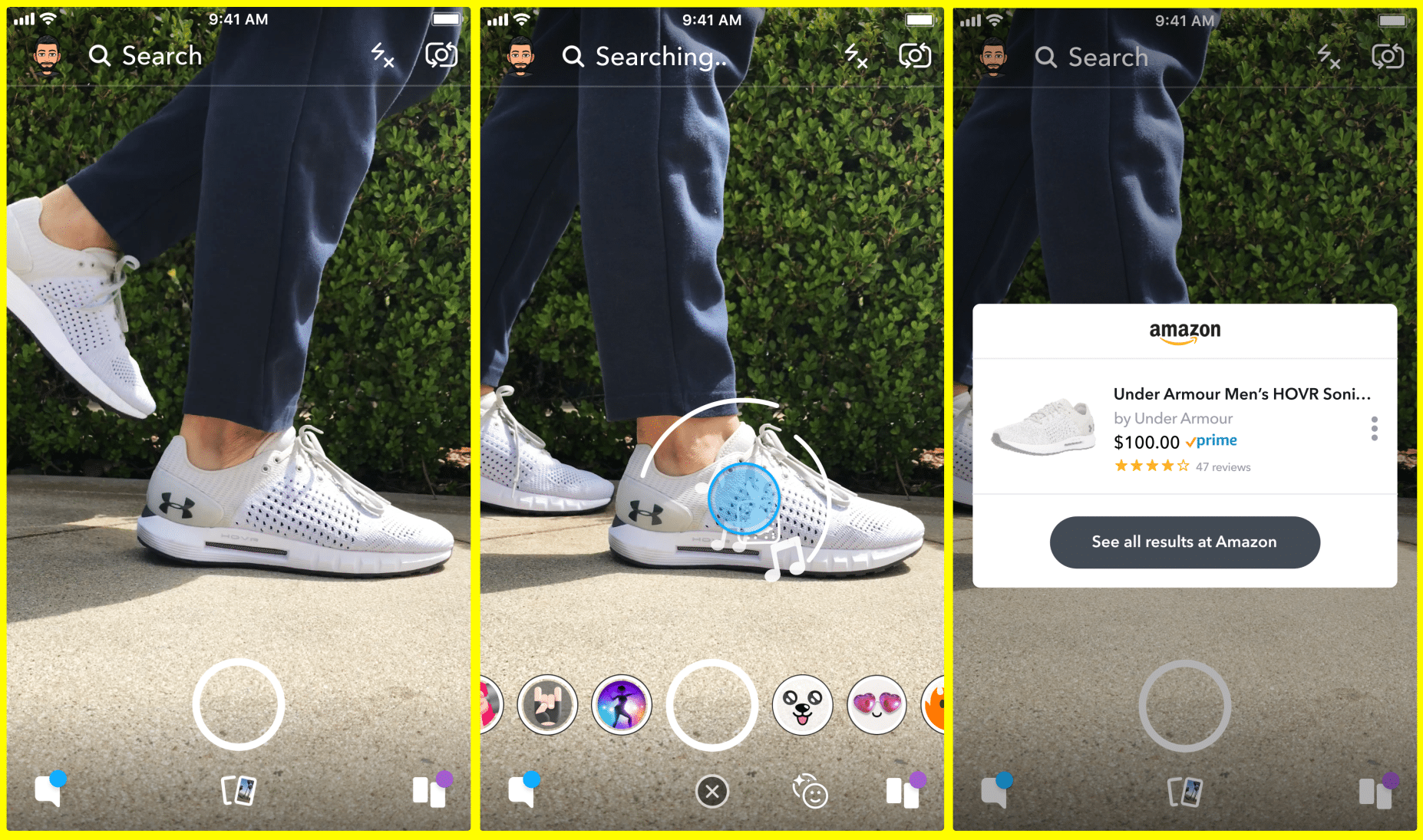
This post is adapted from ARtillery Intelligence’s latest report, AR Commerce: Monetization Comes Into View. It includes some of its data and takeaways. More can be previewed here and subscribe for the full report.
Many questions surround the sometimes-overhyped AR sector. The biggest is how it will make money. There are several answers to that question including enterprise productivity, AR advertising, gaming (e.g. in-app purchases) and others we’ve examined in past reports.
But the area of AR monetization that’s perhaps most logical – and already underway – is commerce. This is the segment of AR in which graphical overlays inform consumers while shopping. It provides contextual product information to inform and incentivize purchases.
This will represent an impactful technology for consumer spending. ARtillery Intelligence projects that $6.1 billion in annual transaction value will flow through AR interfaces by 2022. This means AR will be used somewhere in the consumer shopping journey for that volume of transactions.
Picking up where we left off last week, we’ll dive deeper on visual search — just one form of AR shopping — particularly what Snapchat is doing. Though Google will be the visual search leader, there will be room for others in specific verticals and use cases. Snapchat is positioning itself.

Snapchat Joins the Party
In addition to AR lenses, Snapchat continues to show interest in visual search. This makes sense for several reasons. Snapchat’s core millennial demographic is comfortable with the smartphone camera. And Snapchat is motivated to find ways to boost its core ad business.
On the first point about alignment with Snapchat’s user base, ViSenze reports that 62 percent of millennials are comfortable with visual search in digital shopping. Not only are millennials (and Gen Z) “XR-native,” but they’re oriented towards things that are tangible and visual.
“Eighty percent of Millennials won’t see a new home unless there’s a virtual tour,” said Build.com’s Dave Nickens at AWE. “It’s going from ‘tell me’ to ‘show me.’ No one’s going to read manuals unless you bring that manual to life. Don’t tell me about it… let me experience it.”

So what is Snap doing exactly? Its latest AR feature lets users scan physical items or barcodes with Snapchat’s camera. It then overlays a card that shows information about that item or similar ones. That info will include price, reviews and a purchase button, all of which flow from Amazon.
That last part is a key factor, as Snapchat has intelligently partnered for better e-commerce functionality. But beyond just ability to transact, it also taps into Amazon’s vast product image database for better object recognition, which means a more functional user experience.
Visual search is a logical extension for Snap. It’s an early AR leader which has conditioned AR behavior with younger users that already have a high affinity for the camera. Fashion is also in its DNA, making the style/product-hunting use case (similar to Google) a natural one.
But more importantly, it’s a natural move because of its monetization potential. Driving commerce is something Snapchat continues to develop, such as Shoppable AR, and is central to its ability to grow revenue amidst volatile and sometimes-troubled stock performance.

Trojan Horse
If we pan back from visual search to Snap’s overall AR blitz, it’s already driven substantial revenue from branded AR lenses. We’ve projected that it made just over $400 million in revenue from AR lenses last year. The question is if visual search represents another AR revenue stream.
Snap hasn’t disclosed if it’s getting affiliate revenue from Amazon for purchases it drives. More likely, it’s a barter which brings Amazon’s integration for a more thorough UX. It also boosts user engagement and validates an AR commerce model that’s core to Snap’s long-term vision.
The longer-term play could also be glasses-based. Like Apple, Snap is likely seeding that potential end-point by conditioning users in various ways. One of those ways is its Spectacles. Though they aren’t AR glasses, they could be acclimating the world to face-worn sensors.
“That’s the secret strategy or the Trojan horse: How do you get enough sensors in people’s hands at a cheap price or on their face?” Ubiquity 6 CEO Anjney Midha said recently. “That sets them up for very immersive AR experiences or VR experiences a year or two years from now.”
See more details about this report or continue reading here.
For deeper XR data and intelligence, join ARtillery PRO and subscribe to the free AR Insider Weekly newsletter.
Disclosure: AR Insider has no financial stake in the companies mentioned in this post, nor received payment for its production. Disclosure and ethics policy can be seen here.
Header image credit: Snap, Inc.
